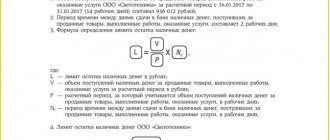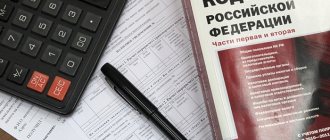The role of value added tax in the Russian Federation
Value added tax is an indirect tax of federal significance and plays a significant role in the formation of the budget of the Russian Federation. The value added tax is regulated by Chapter 21 Part 2 of the Tax Code of the Russian Federation.
The role of VAT in the state is quite high. Currently, the entire tax amount goes to the Federal Budget, which makes it possible to solve such important government tasks as:
- repayment of public debt;
- increasing pension and social benefits to citizens of the Russian Federation;
- implementation of a number of federal social programs, etc.
VAT: basic concepts
In Russia, the value added tax appeared in 1992, and its history begins with the German economist Wilhelm von Simenson, who in 1919 proposed a “refined turnover tax.”
In tax practice, the French were the first to levy VAT in 1954, but not on the territory of their country, but in the colony of Cote d'Ivoire. Today, VAT with various modifications exists in tax practice in more than 50 countries around the world. In the legislation of the Russian Federation, Chapter 21 of the Tax Code of the Russian Federation is devoted to VAT. In addition, the Ministry of Finance and the Federal Tax Service constantly issue letters and clarifications for ambiguous situations.
The essence of VAT is the withdrawal from the budget of part of the value added at each stage of production of a product or creation of a service. VAT refers to indirect taxes, in contrast to direct taxes, which are levied directly on the financial results of the taxpayer’s activities or his property; VAT is included in the price of each product. And the actual tax payers are citizens, since they regularly buy goods or use services. Businessmen, in fact, only transfer the tax amount to government agencies.
The advantage of VAT as an indirect tax is that revenues from it to the budget do not dry out: even in a crisis situation, the population needs to make purchases, even the most minimal ones, only what is necessary for life.
According to Art. 143 of the Tax Code of the Russian Federation, organizations, entrepreneurs and persons moving goods across the borders of the Customs Union are required to pay VAT. Taxpayers in special regimes, as well as a number of companies organizing major sporting events in the Russian Federation, are exempt from VAT.
The Tax Code of the Russian Federation provides for tax exemption in several other cases. Read more in the material “How to properly exempt from VAT” .
The object of taxation is the sale of goods or the provision of services, the performance of construction and installation work on one’s own, the importation of goods into the Russian Federation, the transfer of goods or the provision of services for the company’s own needs (Article 146 of the Tax Code of the Russian Federation).
What business processes are not subject to tax, read the article “Transactions not subject to taxation: types and features” .
The taxpayer will calculate the amount of VAT payable to the budget as the difference between the “outgoing” tax (that is, the tax presented to buyers of his goods or (that is, the one allocated by his suppliers in invoices).
The basic VAT rate in 2020-2021 is 20%. For socially significant goods, reduced tax rates are provided: 10 and 0% (Article 164 of the Tax Code of the Russian Federation). In addition, a number of transactions are exempt from taxation: education, banking, ritual, religious services, transportation of passengers.
The tax period for VAT is quarterly. At the end of each quarter, the taxpayer submits a declaration and pays tax to the budget.
NOTE! The VAT return is submitted only electronically.
In 2020-2021, the deadlines for submitting VAT reports (including postponements) are as follows:
- for the third quarter of 2021 - until October 26, 2020;
- for the fourth quarter of 2021 - until January 25, 2021;
- for the first quarter of 2021 - until 04/26/2021;
- for the second quarter of 2021 - until July 26, 2021;
- for the third quarter of 2021 - until October 25, 2021;
- for the fourth quarter of 2021 - until 01/25/2022.
In order for the declaration to pass control at the Federal Tax Service, and for the payment order to be correctly executed by the bank, the accountant must indicate the correct BCC VAT years 2020-2021.
Tax period for VAT
The tax period for paying VAT is a quarter (Article 163 of the Tax Code of the Russian Federation). The declaration must be submitted to the tax authorities within the following deadlines:
| Quarter | Deadline for submitting the declaration |
| 1st quarter | Until April 25 |
| 2nd quarter | Until July 25 |
| 3rd quarter | Until October 25 |
| 4th quarter | Until January 25 |
VAT is paid in equal installments before the 20th day of each month of the next quarter:
| Quarter | VAT payment deadlines |
| 1st quarter | Until April 25, until May 25, until June 25 |
| 2nd quarter | Until July 25, until August 25, until September 25 |
| 3rd quarter | Until October 25, until November 25, until December 25 |
| 4th quarter | Until January 25, until February 25, until March 25 |
How to determine the VAT rate?
To determine the tax rate, you must be guided by Article 164 of the Tax Code of the Russian Federation:
| Tax rate | Type of economic activity |
| 0% | · export of goods; · international transportation of goods; · work related to pipeline transport of oil and petroleum products; · organization of pipeline transportation of natural gas; · export of electricity; · transshipment and storage of export goods in sea and river ports; · services for processing goods in customs zones; · goods, works, services in the field of space activities; · rail transportation of passengers and luggage on commuter and long-distance trains; · extraction of precious metals from scrap and waste; · goods, works, services for foreign diplomats. |
| 10% | · sales of food products; · sales of children's goods; · sales of printed products; · sale of medical products; · domestic air transportation. |
| 18% | All other cases not mentioned earlier. |
As is already clear, the tax rate depends on the type of economic activity. There are situations when an organization can simultaneously perform several operations related to different tax rates. In this case, it is necessary to make calculations very carefully using VAT calculation formulas.
According to Federal Law No. 303-FZ dated 03.08.2018 “On amendments to certain legislative acts of the Russian Federation on taxes and fees”, from 01.01.2021, taxation will be carried out at a tax rate of not 18 percent, but 20 percent.
Distinguish between taxes, penalties and fines
Value added tax (VAT) is the collection of part of the cost of goods, works, services produced in Russia or imported into the Russian Federation.
It is paid to the treasury upon the sale of various goods, works and services (GWS) for a certain reporting period. VAT is a fee for which there is no uniform rate. In the current year, 2021, goods, works and services are taxed at rates of 20%, 10% (food, children's goods) and 0%. Important! From 01/01/2019, the general rate for this tax increased from 18 to 20% (Federal Law No. 303-FZ of 08/03/2018). Therefore, this year, value added tax must be calculated at rates of 20% (clause 3 of Article 164 of the Tax Code of the Russian Federation), 10% (clause 2 of Article 164 of the Tax Code of the Russian Federation, nothing changes for these categories of goods) and 0% ( Clause 1 of Article 164 of the Tax Code of the Russian Federation). To correctly determine rates in 2021, specialists can use the recommendations set out in Letter of the Federal Tax Service No. SD-4-3 / [email protected] dated 10/23/2018.
BCC VAT (we'll look at penalties later) is used to group different types of income coming to the budget. BCCs are a twenty-digit identifier that includes information about one or another type of budget income or expense (Order No. 65n dated July 1, 2013).
To issue a payment order for a 2021 KBK VAT penalty, it is necessary to clarify the current regulations in order to avoid the procedure for clarification or return of payment or further penalties for late payment of tax or penalties. If the taxpayer is late in payment, then, in accordance with Art. 75 of the Tax Code of the Russian Federation, the tax inspectorate will charge him a penalty. The payment slip will need to indicate the KBK VAT penalty in 2021. A penalty is charged for each day of late payment. The institution has the opportunity to independently calculate penalties according to a given algorithm or contact the territorial Federal Tax Service for the corresponding requirement. A fine is a one-time penalty for violating tax rules. Based on Art. 122 of the Tax Code of the Russian Federation, a fine is assessed if unpaid or incompletely paid tax is discovered during a desk or other audit. The amount of the fine is determined in accordance with Art. 15.11 Code of Administrative Offenses of the Russian Federation.
Features and purpose of KBK
The budget classification of the Russian Federation is regulated by Order of the Ministry of Finance of Russia dated July 1, 2013 No. 65n “On approval of the Instructions on the procedure for applying the budget classification of the Russian Federation.” The instructions, in turn, are based on the provisions of Chapter 4 and Article 165 of the Budget Code of the Russian Federation.
In general, BCC is a certain set of numbers characterizing a financial transaction . This designation method allows you to combine into groups all income and expenses coming to the budget.
Thanks to budget classification codes it is possible to:
- make payments without errors;
- obtain information about the stages of payment transfer;
- optimize the activities of employees directly related to payments;
- rationally distribute funds within the budget;
- identify arrears.
Thus, if the payment order accurately indicates the budget classification code, then you can be sure that the funds will go exactly as intended and there will be no problems with the tax authorities.
Where should the BCC be indicated?
Budget classification codes (BCC) are indicated in payment orders. A separate field (104) is allocated for this.
It is very important to fill out this section of the payment order correctly, because... the fact of non-receipt of funds by the budget is considered as a lack of payment with all the ensuing consequences, not excluding the bringing of the taxpayer and the policyholder to administrative liability. In the future, in order to resolve this issue, the payer will have to write a statement and confirm the fact of payment.
How to fill out a payment form
Budget classification codes are indicated in field 104; they are the same for the entire country. When filling out the payment form, it is necessary to take into account that the details are indicated by the tax office to which the payer is assigned in accordance with his location. The registration rules are specified in the Regulation of the Central Bank of the Russian Federation No. 383-P dated June 19, 2012 and Order of the Ministry of Finance of the Russian Federation No. 107n dated November 12, 2013, as amended.
When filling out, you must also correctly indicate:
- payer status (check in the article “What is the payer status in a payment order and how to fill it out”);
- payment amount (integer);
- quarter for which payment is made (in the form “KV.01.2019”).
How many KBK signs are there and what do they mean?
Understanding the meaning of the BCC numbers allows you to consciously fill out section 104 of the payment order.
Order of the Ministry of Finance of Russia No. 65n provides a detailed explanation of the meaning of the twenty-digit budget classification code.
The structure of the KBK includes the following sections:
| Chapter | Explanation |
| 1-3 | Code of the chief budget revenue administrator, i.e. the one to whom the taxpayer makes a transfer of funds. For example:
|
| 4-13 | Budget income type code: |
| 4 | Income group, i.e. income |
| 5-6 | Income subgroup For example:
|
| 7-8 | Income item |
| 9-11 | Sub-item of income |
| 12-13 | The income element, i.e. to which budget the taxpayer plans to pay. For example:
|
| 14-20 | Budget revenue subtype code: |
| 14-17 | Budget income subtype group - the basis for conducting a financial transaction For example:
|
| 18-20 | Analytical group of the subtype of budget revenues, i.e. indicates income category. For example:
|
BCC for VAT for 2018-2021 for legal entities
In 2021, the BCC for VAT provides for the following:
| VAT | Tax | Penalty | Fine |
| Goods, works and services sold on the territory of the Russian Federation | 182 1 0300 110 | 182 1 03 0100001 2100 110 | 182 1 03 0100001 3000 110 |
| Goods imported from Belarus and Kazakhstan | 182 1 0400 110 | 182 1 0400 110 | 182 1 0400 110 |
| Goods imported into the Russian Federation from other countries (administrator - Federal Customs Service) | 153 1 0400 110 | 153 1 0400 110 | 153 1 0400 110 |
Import from EAEU countries - BCC for import VAT
Since May 29, 2014, the EAEU has existed - the Eurasian Economic Union. The unification of the Russian Federation, the Republic of Belarus and the Republic of Kazakhstan into a single economic zone has simplified the procedure for trade policy and commodity exchange between countries. The main idea of creating the EAEU is to ease the tax burden in the process of trade between participants. Also, a Customs Union has been created for the EAEU member countries, establishing uniform rules for regulating foreign trade with third parties. Currently, Armenia and Kyrgyzstan have also joined the EAEU. Thus, a special regime for paying value added tax for taxpayers from the Russian Federation has been established when trading with Belarus, Kazakhstan, Armenia and Kyrgyzstan.
VAT when purchasing goods from EAEU countries is paid by taxpayers both with a general tax regime and with special regimes.
It is important to remember that VAT when importing from EAEU countries is paid not upon import at customs, but to the territorial Federal Tax Service through a payment order. VAT must be transferred even if the counterparty is not from the countries of the Customs Union, but imports goods from the territory of the EAEU countries.
You will also have to pay VAT if the purchased products were previously imported into the EAEU countries.
This VAT can be calculated using a special formula:
Import VAT = (product price + excise tax amount (if any)) × tax rate (10%, 20%).
From 01/01/2019, the tax rate has been increased from 18 to 20%.
If a product is purchased in a foreign currency, its price must be converted into rubles at the current exchange rate at the time the product is accepted for accounting.
After registering goods from the EAEU countries, it is necessary to transfer VAT (KBK - 182 1 0400 110) to the tax office by the 20th day of the month following the period in which imported products were accepted for accounting.
During this period, the taxpayer is also required to submit a declaration on indirect taxes (import VAT - indirect tax) along with an application for the import of products and the transfer of value added tax. The territorial Federal Tax Service must provide all settlement and payment documents for imported goods (invoice, delivery note, etc.) and a certified copy of a bank statement reflecting the VAT payment transaction.
Errors when filling out the KBK
Tax legislation specifies situations when the obligation to pay tax is considered unfulfilled (Clause 4 of Article 45 of the Tax Code of the Russian Federation), namely:
- incorrect indication of the Federal Treasury account number;
- incorrect indication of the name of the recipient's bank.
The tax legislation does not mention any other errors in payment orders that resulted in non-transfer of funds.
But in accordance with Federal Law No. 125-FZ of July 24, 1998 “On compulsory social insurance against accidents at work and occupational diseases,” the obligation is considered unfulfilled if the following is incorrectly indicated:
- Federal Treasury account numbers;
- name of the recipient's bank;
- budget classification code.
Based on these documents, we can conclude that if section (104) of the payment order is filled out incorrectly, the tax authorities do not have the right not to count the payment, but the fund has the right to do so.
Thus, in order to avoid troubles, you must be very careful when filling out the BCC in the payment order.
Results
The BCC for VAT did not change in 2020-2021: the codes themselves depend on whether the goods were sold in the Russian Federation or imported from abroad, as well as on the type of payment: current payment, fine or penalty. An error in indicating the KBK is not critical for the company, but it is better to check our article when indicating the KBK, so as not to worry about whether the payment was received to the budget on time, and not to argue with the tax authorities.
You can read about the BCC for other taxes in our articles:
- “Deciphering the KBK in 2020-2021 - 18210102010011000110, etc.”;
- “KBK for payment of personal income tax on dividends in 2020”;
- “CBC for land tax in 2019-2020 for legal entities”;
- “KBK for insurance premiums for 2021 - 2021 - table”;
- "KBK for payment of UTII in 2021 - 2021 for individual entrepreneurs."
You can find more complete information on the topic in ConsultantPlus. Free trial access to the system for 2 days.
Questions and answers
- When calculating VAT, we got the amount of 5643.85 rubles. They say that there is no need to indicate or pay kopecks. Is it so?
Answer: In accordance with paragraph 6 of Art. 52 of the Tax Code of the Russian Federation, the amount of tax is calculated in full rubles. A tax amount of less than 50 kopecks is discarded, and a tax amount of 50 kopecks or more is rounded up to the full ruble. Thus, you need to pay VAT in the amount of 5644 rubles.
- Is it necessary to indicate the size of the VAT portion (we plan to pay ½ part) or is the amount sufficient?
Answer: In the purpose of payment in the payment order, explain that you, for example, are paying ½ of the VAT for the 3rd quarter of 2018. In this case, the tax authorities will have fewer questions.
How to fill out a payment order for VAT payment according to the new rules?
So that you can know for sure that you have fulfilled your obligation to calculate and pay VAT, we will tell you how to correctly fill out a payment order to transfer tax to the budget.
DO NOT MISS! From 01/01/2021, there have been changes in the details of the payment order for the payment of taxes. There will be a transition period until 05/01/2021 (that is, payments can be made according to the old rules). And from 05/01/2021 only new rules need to be applied.
Let's start filling out the payment order from top to bottom. Some data, for example, the name of the taxpayer, his tax identification number, checkpoint, as well as bank details, the accounting program will insert into the document independently. We focus on those details that are specific to tax payments in general and specifically for VAT.
Field 101, which indicates the status of the payer, can take the value 01 - if the payer is a legal entity, 09 - if an individual entrepreneur pays (for individual entrepreneurs, the TIN is required).
NOTE! If you pay VAT when importing imported goods, then field 101 should contain the value 06. If you act as a tax agent for VAT, then code 02 should be entered.
The amount of tax payable is rounded to the nearest ruble (Clause 6, Article 52 of the Tax Code of the Russian Federation). The details of the payee, that is, the Federal Tax Service Inspectorate to which the company belongs, can be obtained on the inspection website or clarified by calling the Federal Tax Service Inspectorate hotline.
The type of transaction for any payment orders is 01. The order of payment for VAT is 5.
The UIN in field 22 is 0. From now on, the payment type (field 110) no longer needs to be filled in: banks will accept a payment slip with an empty field value, as required by the Federal Tax Service.
BCC for VAT for payment of the tax itself is 182 1 0300 110 (goods or services are sold in the Russian Federation), BCC for payment of VAT on imports depends on the importing country (182 1 0400 110 for goods from Belarus and Kazakhstan, for other countries - 153 1 04 0100001 1000 110).
Field "Base of payment" - TP, payment of the current period. Next, you need to indicate the tax period - the quarter for which the tax is transferred. In the “Document number” field you need to put 0, and in the “Document date” field - the date of signing the tax return.
OKTMO in a payment order consists of 8 or 11 characters; its meaning can be clarified in the Federal Tax Service or on the Internet. It is mandatory to indicate it.
We recommend indicating the purpose of the payment as follows: “1/3 of VAT for the _ quarter of 20__ by the payment deadline “___”________20___.”
Please note: the tax can be transferred in parts, or in one amount at once. On what this depends, read the article “In what cases is it possible to pay VAT in 1/3 (shares)?” .
ConsultantPlus experts have prepared a sample payment order for VAT transfer. Get trial access to the system for free and proceed to the sample and comments on filling it out.
When transferring VAT penalties, it matters whether the defaulter repays the debt on his own or at the request of the Federal Tax Service. In the first case, in the payment order in the “basis of payment” field, you need to put the PO, and in the purpose of the payment, the UIN must be set to 0.
If the tax authorities demanded that penalties be paid, then you need to enter the UIN number specified in the request in field 22 “Code”, and if it is not in the request, then 0.
See also: “Do I need a UIN on a fine payment?” .
The basis of payment in this case is TR. Payment deadline - the deadline for repaying the debt to the budget in accordance with the requirements of the inspectors. The “Document number” field is the request number, “Document date” is the request date.
See a sample payment slip for payment of VAT penalties in the ConsultantPlus system. Get access to K+ for free and download the sample along with comments on how to fill it out.
The payment order for the transfer of the VAT fine is filled out in the same way.






